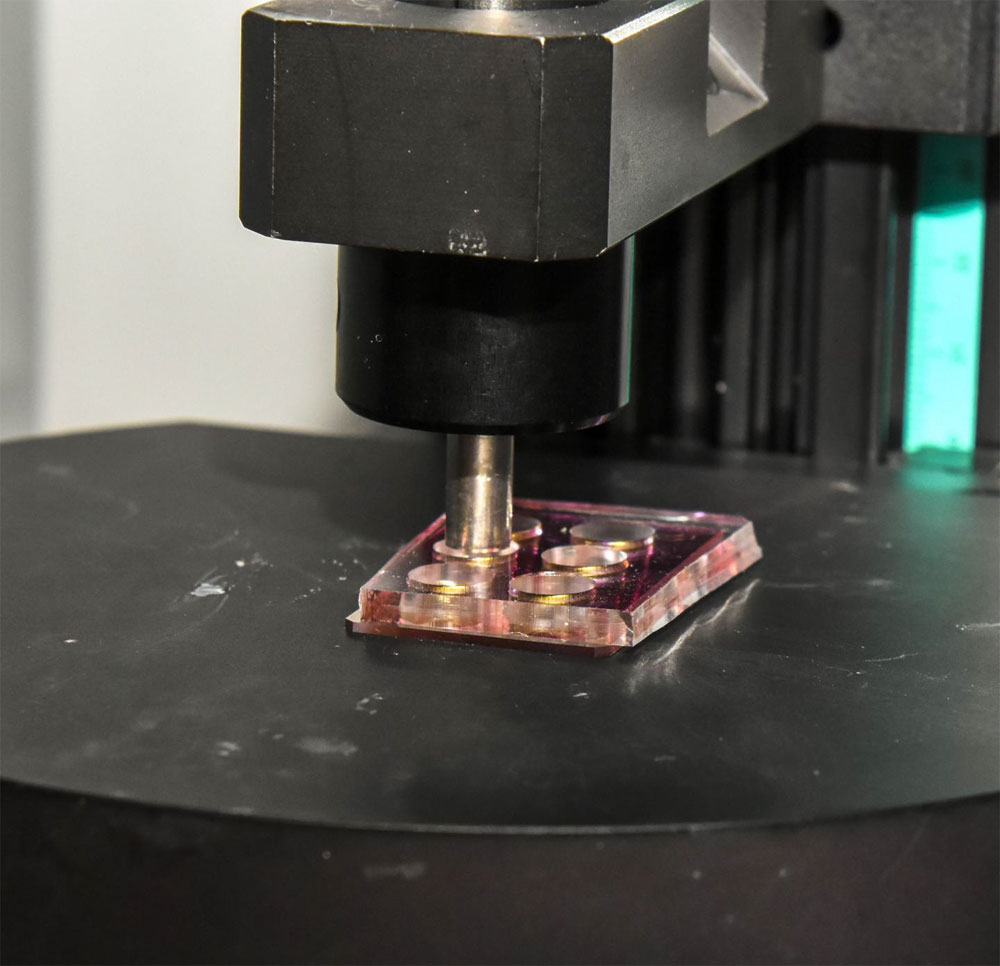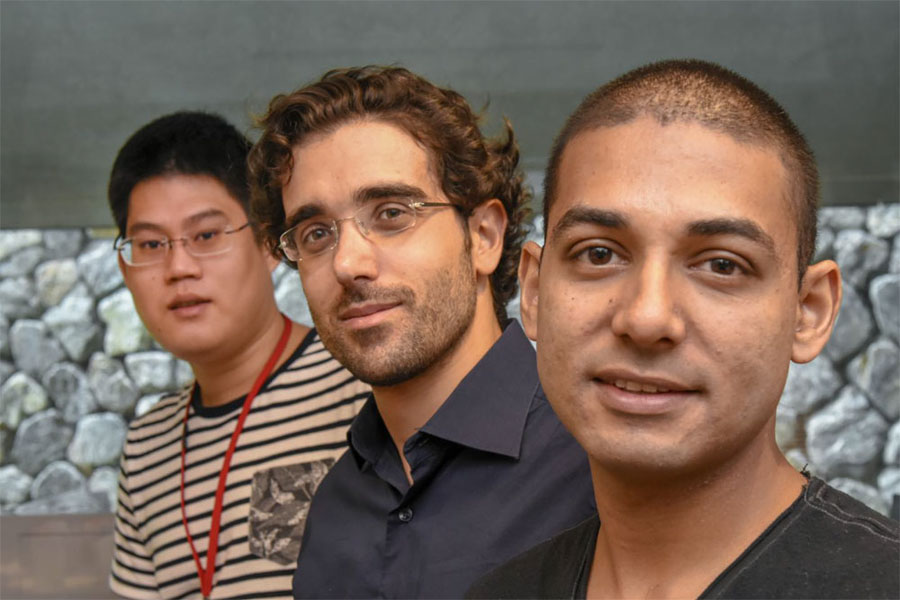The team from the Okinawa Institute of Science and Technology (OIST) wanted to gain a better understanding of the biochemical reactions that allow bacteria to produce biofilms, which are slimy linked matrix structures. Finding no tools available that would allow them to monitor biofilm growth according to their requirements, the researchers modified an existing tool.
 The nanomushroom chip used to grow bacterial colonies for testing. Courtesy of OIST and CC 2.0.
“We created little chips with tiny structures for E. coli to grow on,” said researcher Nikhil Bhalla. "They are covered in mushroom-shaped nanostructures with a stem of silicon dioxide and a cap of gold."
The nanomushroom chip used to grow bacterial colonies for testing. Courtesy of OIST and CC 2.0.
“We created little chips with tiny structures for E. coli to grow on,” said researcher Nikhil Bhalla. "They are covered in mushroom-shaped nanostructures with a stem of silicon dioxide and a cap of gold."
When the researchers exposed the nanomushrooms to a beam of light, the nanostructures absorbed light through a localized surface plasmon resonance (LSPR) sensor. The sensor was able to capture the signatures of biofilm formation in real time by measuring the wavelength shift in the LSPR resonance peak with high temporal resolution. The researchers could observe the E. coli growing around the mushroom structures without damaging the sample.
.
 A nanomushroom chip undergoing testing with an localized surface plasmon resonance (LSPR) device. Courtesy of OIST and CC 2.0.
The researchers used the LSPR sensor to investigate how biofilm formation is affected by different drugs, including conventional antibiotics. To enable a constant stream of data from the LSPR-based tool, the researchers developed a program to automate the data analysis and processing so they could monitor biofilm growth in real time.
A nanomushroom chip undergoing testing with an localized surface plasmon resonance (LSPR) device. Courtesy of OIST and CC 2.0.
The researchers used the LSPR sensor to investigate how biofilm formation is affected by different drugs, including conventional antibiotics. To enable a constant stream of data from the LSPR-based tool, the researchers developed a program to automate the data analysis and processing so they could monitor biofilm growth in real time.
The team believes that its benchtop tool could be used on a variety of clinically relevant bacteria for biofilm characterization and drug screening. It plans to miniaturize the technology to create a portable device that could be used in a range of biosensing applications.
 From left: Researchers Kang-Yu Chu, Riccardo Funari, and Nikhil Bhalla brought together their diverse skills to tackle biofilms. Courtesy of OIST.
According to researcher Riccardo Funari, “This could be a great tool for testing future drugs on lots of different kinds of bacteria."
From left: Researchers Kang-Yu Chu, Riccardo Funari, and Nikhil Bhalla brought together their diverse skills to tackle biofilms. Courtesy of OIST.
According to researcher Riccardo Funari, “This could be a great tool for testing future drugs on lots of different kinds of bacteria."
The research was published in ACS Sensors (doi: 10.1021/acssensors.8b00287).

